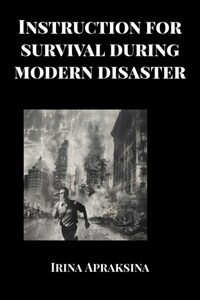Welcome to a world of unexpected challenges and opportunities – a world where survival becomes a necessary skill. In our era, where disasters, crises and unforeseen events are becoming more frequent and diverse, it is important to be prepared for them, having at hand not only knowledge, but also practical survival skills.
Viewed as a guide to survival in a moment of catastrophic chaos, this book is a reliable guide through difficult situations, offering readers not only survival strategies, but also tools to prepare and act in critical moments. We invite you on a journey that will explore various aspects of survival in the modern world-from preparing for a crisis to acting during emergencies.
The first and perhaps one of the most important steps in ensuring your safety and survival is choosing the right place to live. In today’s world, many factors such as natural disasters, environmental threats, political stability, and access to resources play a crucial role in how safe and sustainable your place of residence is.
In this chapter, we will look at the main criteria and factors that should be considered when choosing a place to live in a modern disaster. We will discuss both global and local aspects, helping you make an informed decision about where you would like to be in the event of a crisis. Get ready to reflect on your place in the world and the steps that will help you ensure your safety and survival in the face of change. We will try toрcompare different continents and places of probable survival, in terms of the best location for a person in terms of preserving their own life. But at the beginning, we must formulate for ourselves what criteria should be met by the place that is most effective for survival during an emergency. Let’s describe them.
The location that is most effective for disaster survival must meet a number of key criteria that ensure safety and sustainability in various emergency scenarios. Here are the main requirements that such a place should meet, try to find something similar for yourself in order to save your life and your loved ones in the future. So, what criteria should such a place meet? Let’s list them:
This is of course the risk of natural disasters, such as earthquakes, floods, hurricanes, fires, etc. This should include choosing a location that is either high above sea level or outside the high-risk area. In addition, access to resources is a very important factor. It is important that your chosen location provides access to basic resources needed for survival, such as water, food, wood for firewood, and access to health services and other essential amenities.
Also, the place you choose must be environmentally sustainable and not subject to air, soil, or water pollution. This will ensure the safety and health of the inhabitants in the long term. Political and social stability is also not an unimportant fact that directly affects your safety. The absence of political conflicts, wars, mass riots and crime make the place safer to live in times of crisis.
The peculiarity of climatic conditions should also be taken into account when choosing a place. Acclimate changes can exacerbate emergencies, the site should have a temperate climate with a low risk of extreme weather conditions and be sufficiently remote from potentially dangerous facilities, такихsuch as nuclear power plants, chemical plants, areas of possible military conflict, etc. The ideal place for survival should provide opportunities for self-sufficiency вас in food, energy, and other resources. This may include access to fertile soils for agriculture, the ability to use renewable energy sources, and the availability of natural resources for additional provision. The availability of electricity, gas, fuel and the possibility of using renewable energy sources will ensure comfort and safety in the event of a crisis. Consider the availability of health services and healthcare in your chosen location. The availability of hospitals, pharmacies, doctors, and medical equipment can be critical in the event of a crisis or emergency.
It is important that the location has access to public services such as schools, hospitals, police stations, shops, and other facilities that may be needed in an emergency. Important requirements include providing shelter and protection in the event of a crisis, whether it is building underground shelters, building strong homes, or accessing safe areas. The location should have good access to transport routes and communications, which will allow you to quickly evacuate or get help in case of a crisis. Roads, airports, ports, and other modes of transport should be easily accessible.
Next, we will list the necessary but less important signs of an ideal place in the event of a global catastrophe, such as a world war or a pandemic. So, it’s important that a place provides an opportunity to build a strong community and connect with others who are ready to provide support in the event of a crisis. Mutual aid and solidarity can be crucial factors for survival in extreme situations. Italso provides access to information and communication networks, which will allow you to get current news, connect with the outside world and stay up to date. Equally important is the ability of the site to adapt to changing conditions and to be flexible in making various decisions in emergency situations. This may include having backup plans, reserves, and the ability to respond quickly to changes in circumstances.










